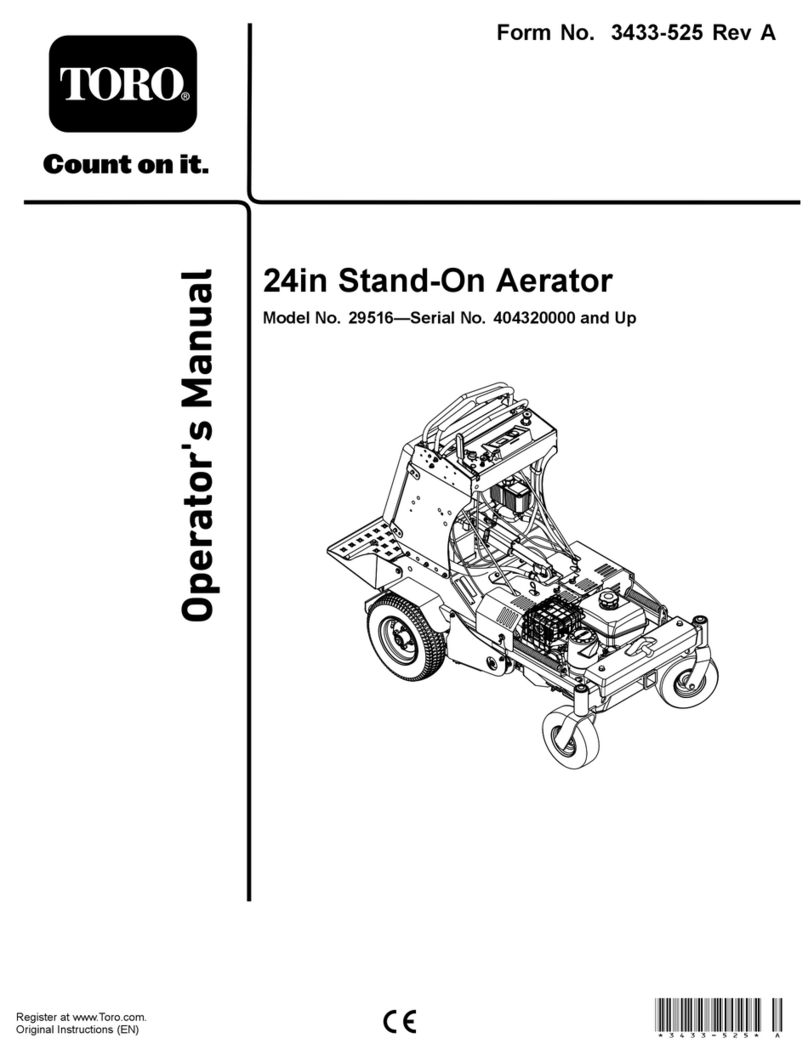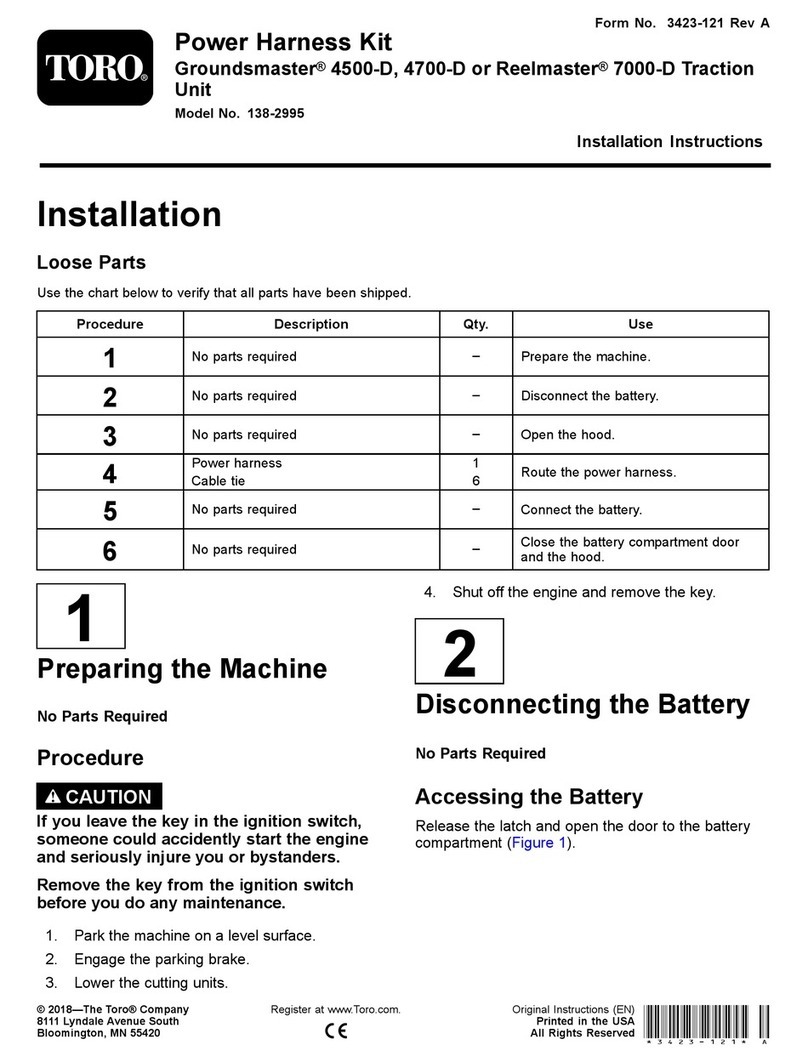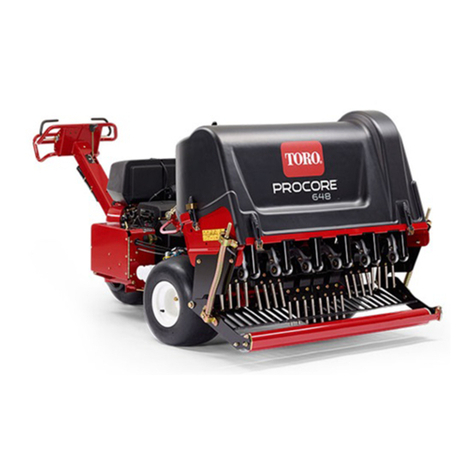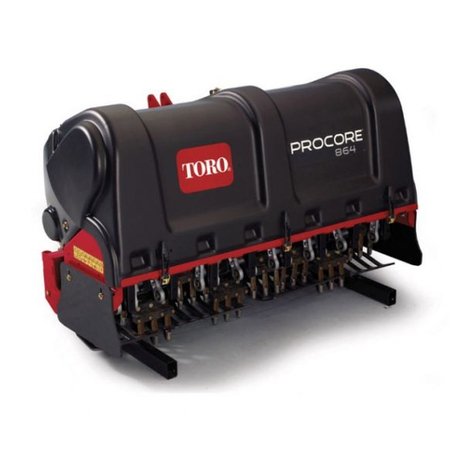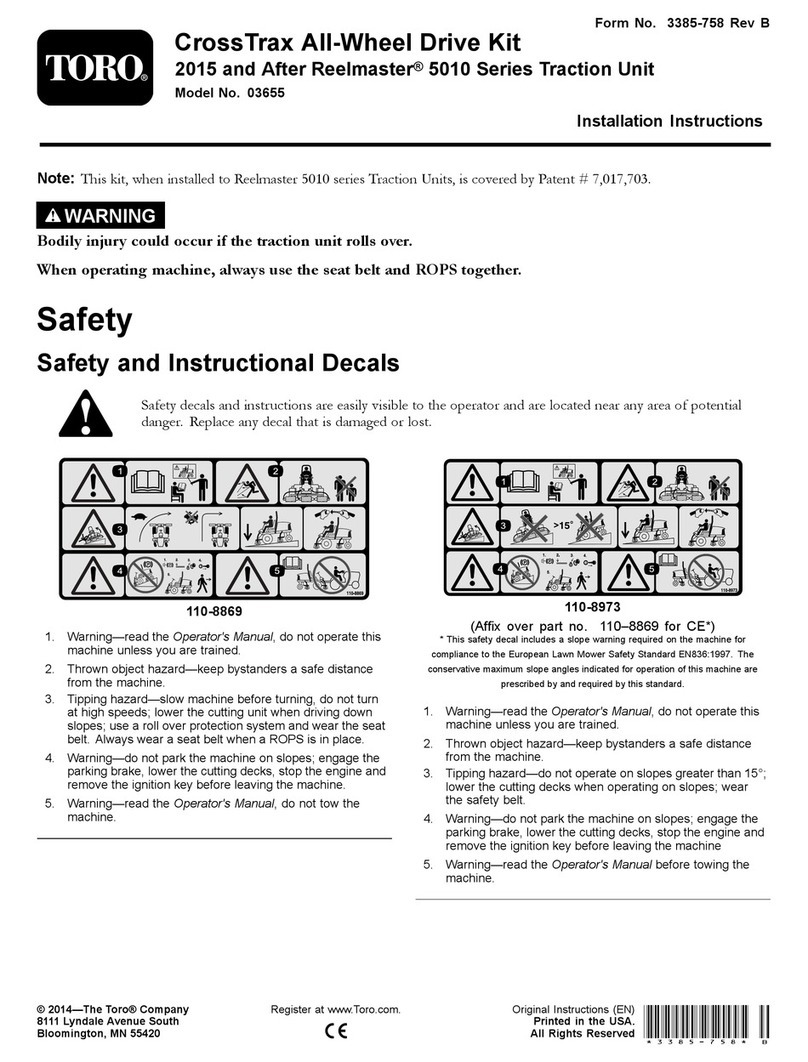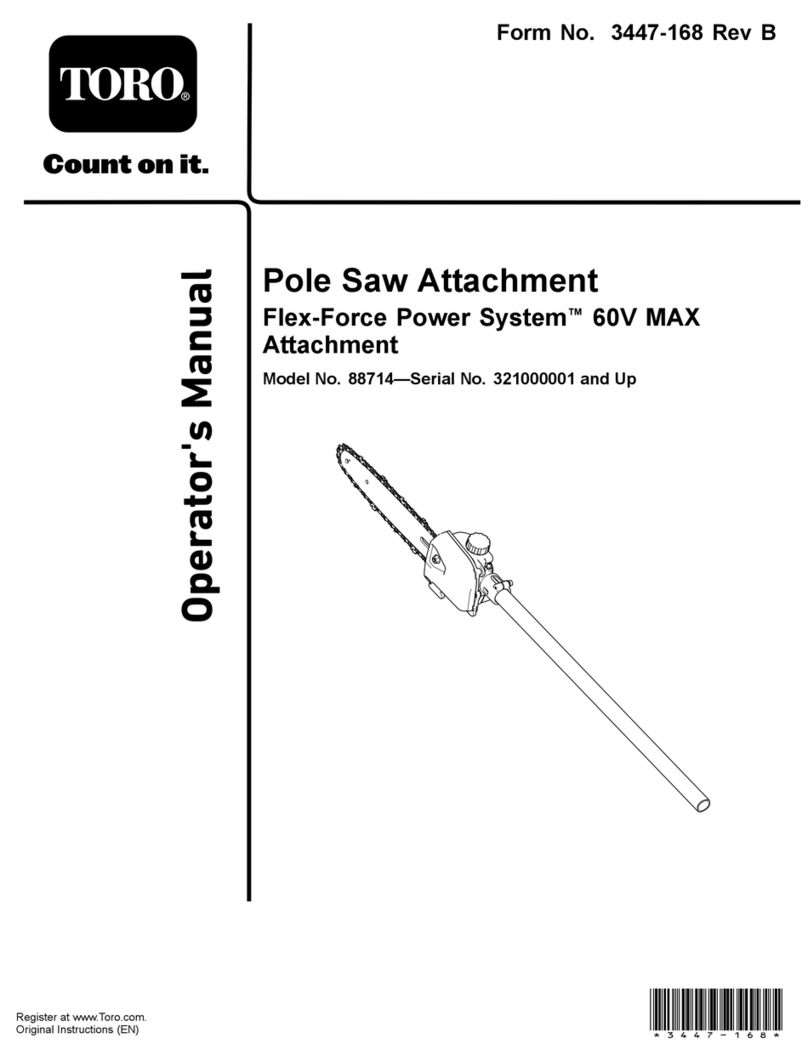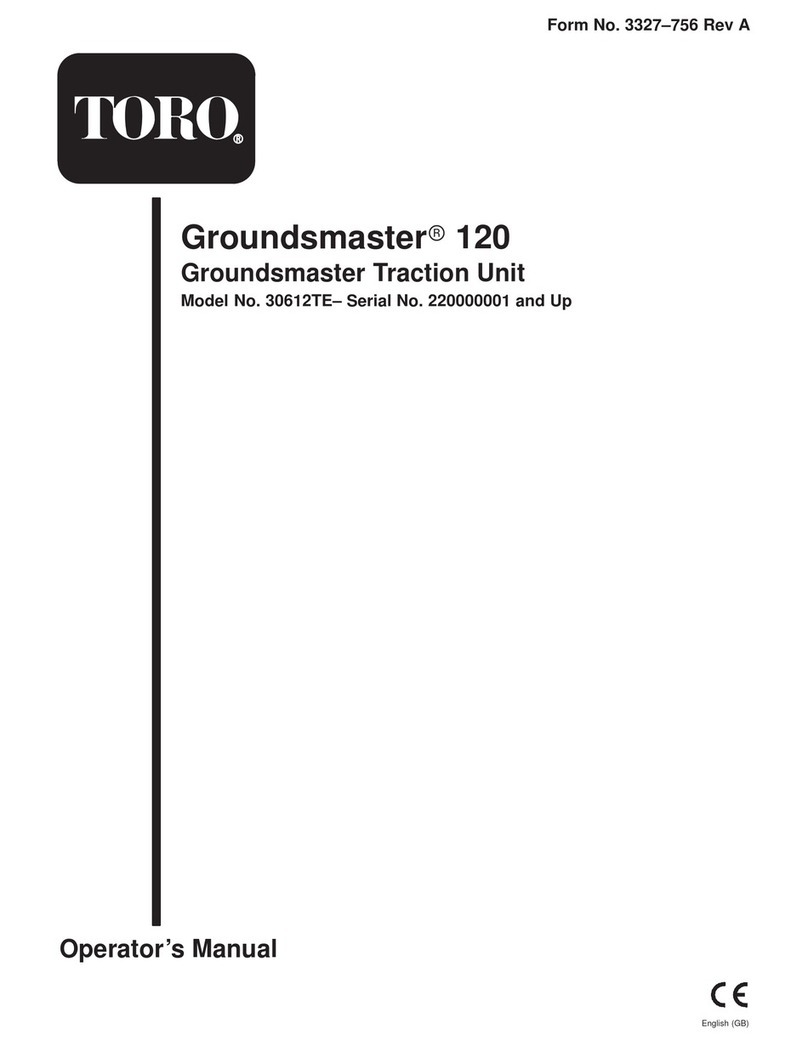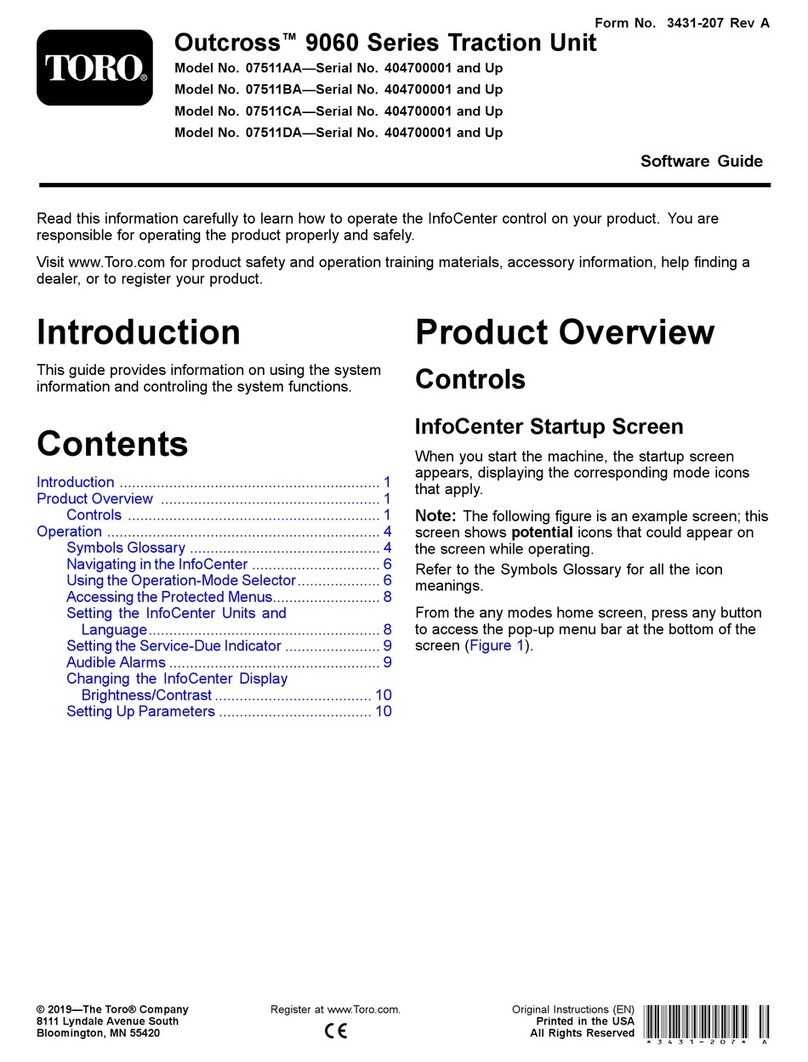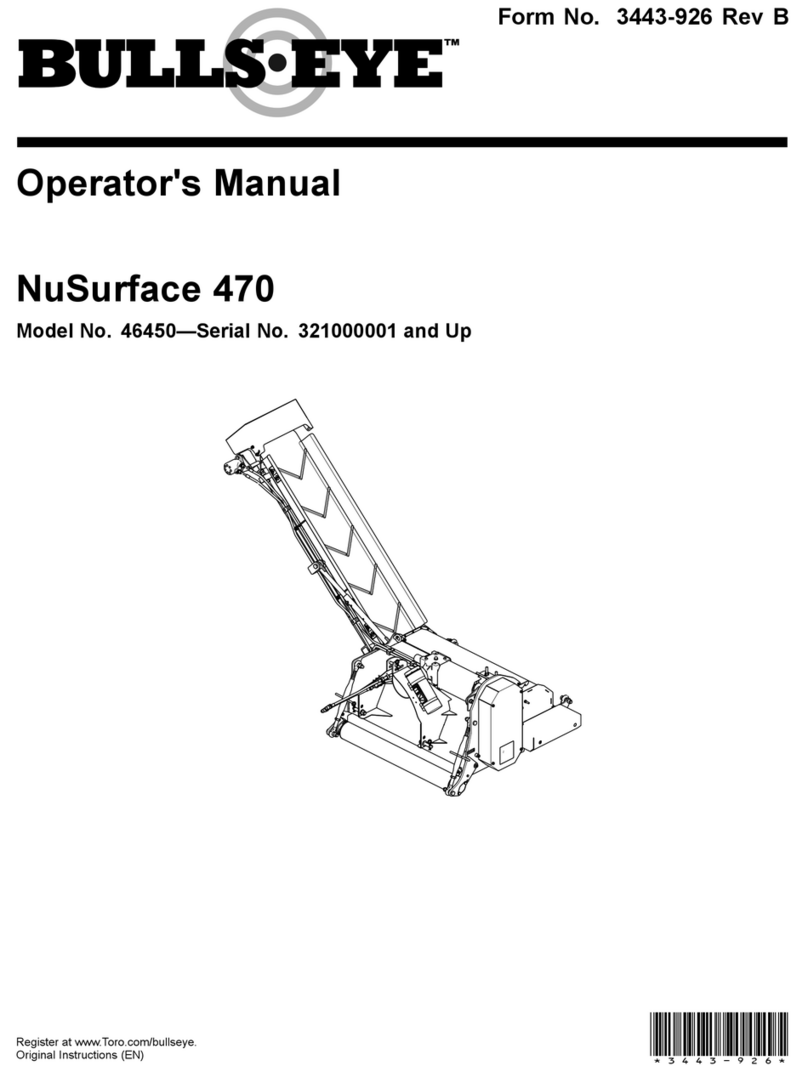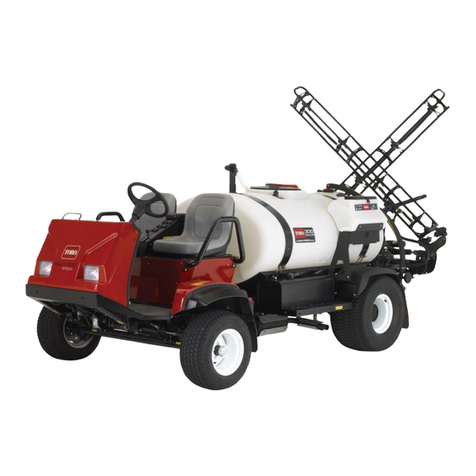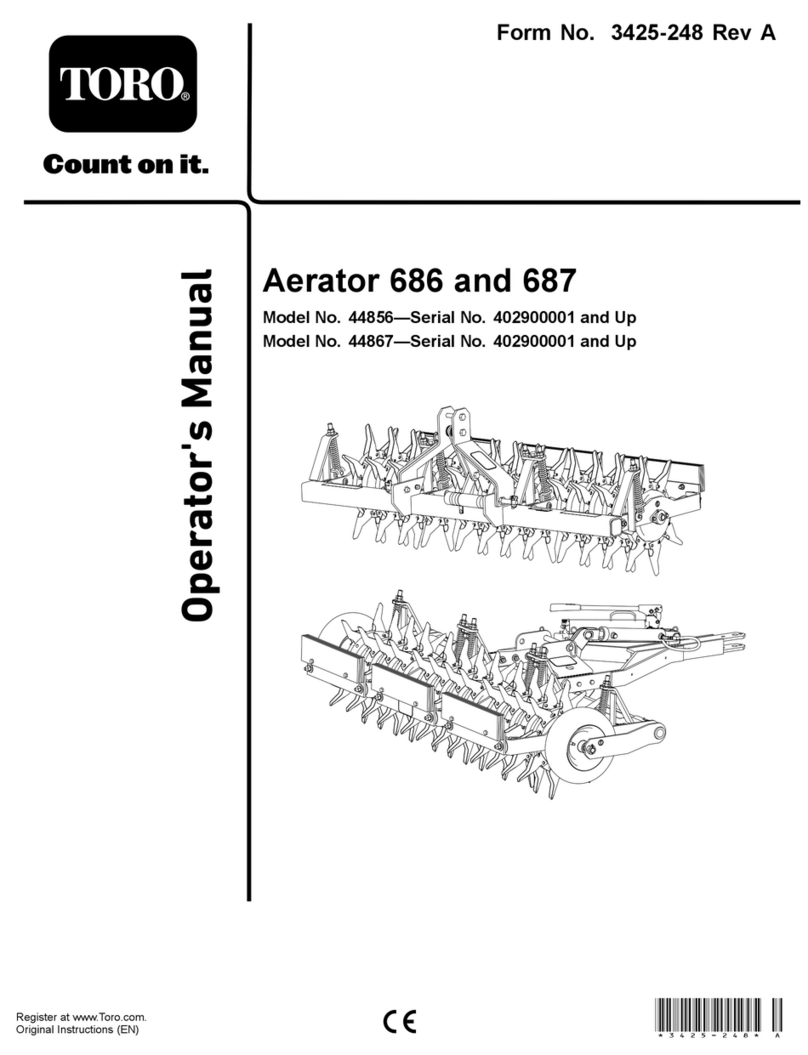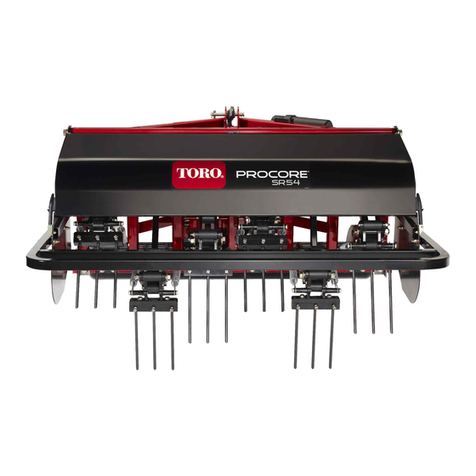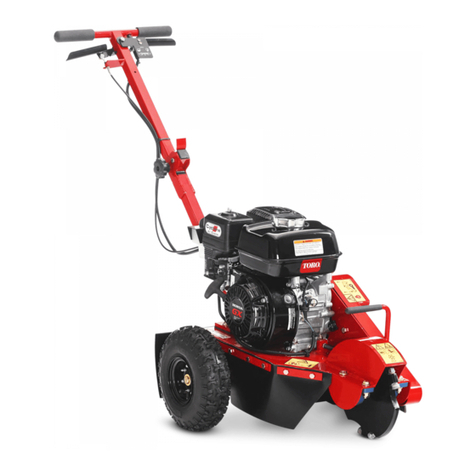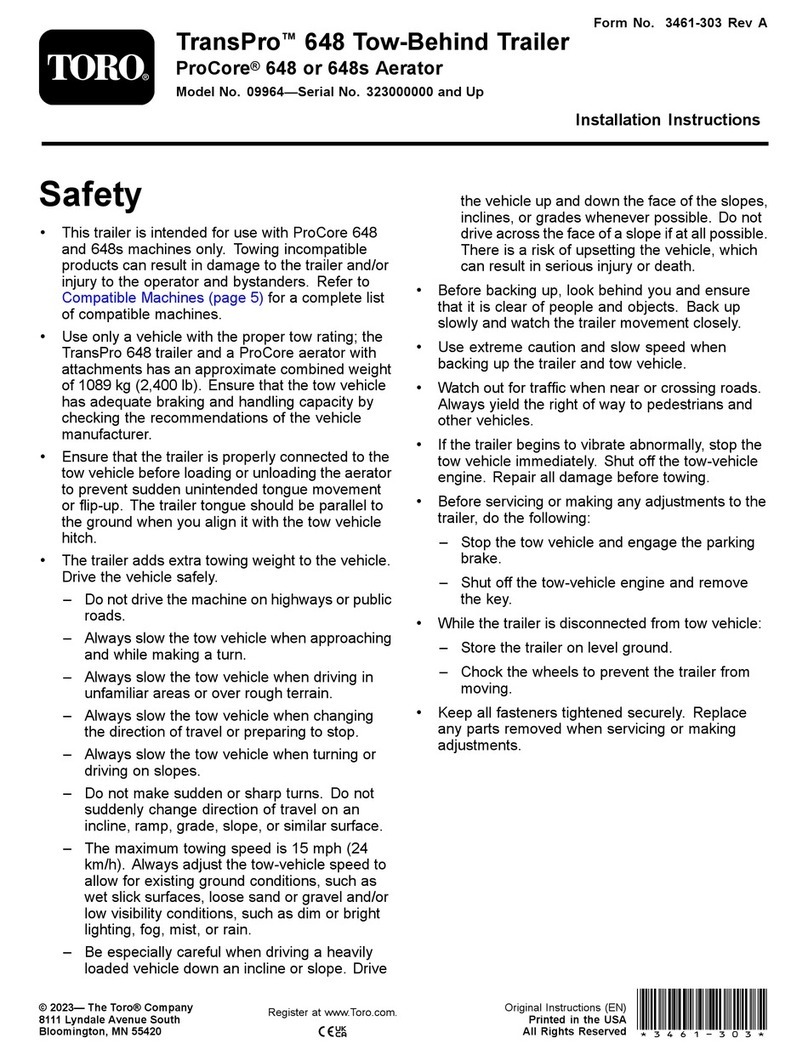
3
Awareness, concern and proper training of personnel
involved in operation, maintenance and storage of this
machine are vital to your safety. Improper machine use
or maintenance can result in injury or death. To reduce
potential for injury or death, comply with all safety
instructions.
BEFORE OPERATING
1. Read and understand this guide thoroughly before
operating the machine. Become familiar with all
controls and know how to stop quickly. Only
trained operators, skilled in slope operation who
have read this guide should operate this machine.
2. Never allow children to operate the machine or
adults to operate it without proper instructions.
3. Remove debris or objects that might interfere with
operation. Keep bystanders away from the work
area.
4. Keep all shields, grass deflectors and safety devices
in place. If a shield or safety device is damaged or
malfunctioning, or a decal is illegible, repair or
replace it before operating the machine. Be sure all
nuts, bolts and screws are tight to assure the
machine is in safe operating condition.
5. Do not operate the machine while wearing sandals,
tennis shoes, sneakers or shorts. Do not wear loose
fitting clothing that could catch in moving parts.
Always wear long pants and substantial shoes.
Wearing safety glasses, safety shoes, ear protection
and a helmet is advisable.
While Operating
6. Using the machine demands attention. To prevent
loss of control:
A. Use only in daylight or when there is good
artificial light.
B. Watch for holes or other hidden hazards.
C. Do not transport the machine close to sand
traps, ditches, creeks or other hazards.
D. Reduce speed on side hills and before making
sharp turns to prevent tipping or loss of con-
trol.
E. Look behind the aerator before backing up.
7. If the tines strike a solid object or the machine
vibrates abnormally, raise the coring head, disen-
gage power to the aerator, stop the prime mover
and engage the parking brake before leaving the
operator’s position. Lift the safety/transport stands
to their full upright position and lower the coring
head onto the stands. Stop the engine and disen-
gage power to the aerator before making repairs or
adjustments.
Inspect the coring head and other machine parts for
damaged or malfunctioning parts and repair or
replace before resuming operation. Be sure all
parts are in good condition and all fasteners are
tight.
8. Before leaving the machine unattended, raise the
coring head, disengage power to the aerator and set
the parking brake. Lift safety/transport stands to
full upright position and lower the coring head onto
stands. Stop the engine.
9. Never dismount while the prime mover is in
motion. Never get on or off the prime mover while
the engine is running and the PTO is engaged.
Never step over the PTO shaft to reach the other
side of the aerator—walk around the machine.
10. Before transporting the machine from one area to
another, raise the coring head, stop the prime
mover, shift into neutral and engage the parking
brake. Lift the safety/transport stands to their full
upright position and lower the coring head onto the
stands.
Safety Instructions

